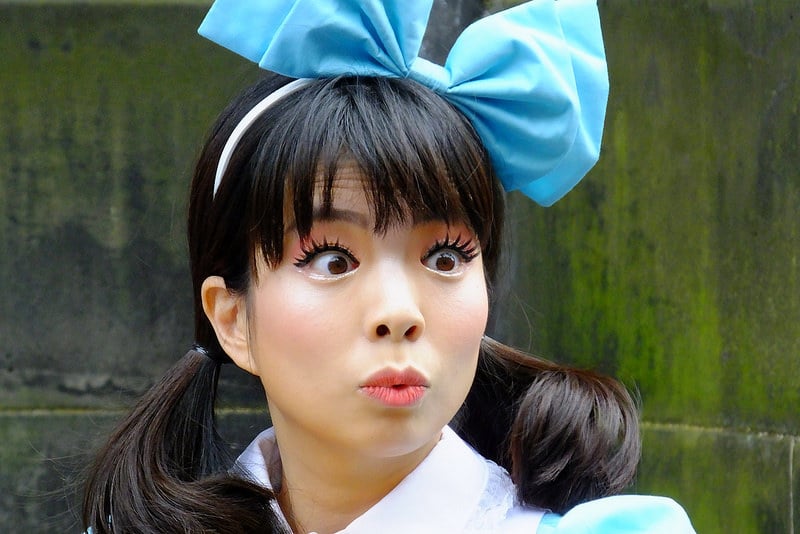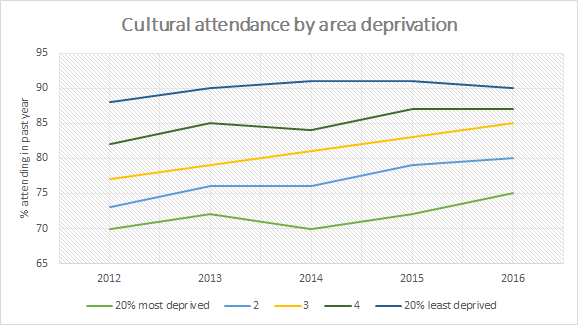
An actress on Edinburgh's Royal Mile
Photo: byronv2 via VisualHunt / CC BY-NC
Arts in Scotland attracts a broader audience
The cultural attendance gap between those living in the most and least deprived areas is at its smallest for five years, according to the Scottish Household Survey.
Cultural attendance in Scotland is on its way to becoming more equitable, official research by the Scottish Government suggests.
The gap in attendance between adults living in the 20% most deprived areas and the 20% least deprived has fallen to its lowest in five years, to 15 percentage points – down from 18 percentage points in 2012, and 21 percentage points in 2014.
The trend holds even when cinema visits, the most popular form of cultural attendance for people across the country, are excluded.
In addition, satisfaction with theatres, concert halls, museums and galleries has improved since 2007 and has remained broadly constant for the past three years.

Cultural engagement
The data emerges from the Scottish Household Survey, which asks a random sample of the general population every year about their cultural attendance and participation over the past 12 months.
It found nine in ten adults were ‘culturally engaged’ in 2016. This is defined as either participating in one cultural activity – such as dancing or singing in a choir – or attending one cultural event or place, including the theatre or the cinema.
The research also shows:
- The only cultural activity most people engaged in was seeing a film in the cinema, which 59% had done in the past year
- Excluding the cinema, 75% of the population had attended a cultural event or place
- Around a third of the population had attended a museum, live music event or the theatre
- ‘Reading for pleasure’ was the most common cultural activity, undertaken by 66% of the population and almost one in five Scots visited a library every week
- Excluding reading, 53% of the population had participated in a cultural activity in the past 12 months.
Profile of the arts attender
The general profile of the arts attender has remained constant. Women, younger people, those with degrees or professional qualifications, and those with good physical and mental health, were the most likely to attend cultural events.
While women in Scotland were 44% more likely to have been to the theatre in the past year, men were more likely to have attend a live music event or a historic place, such as a battle site.
The research notes the level of cultural attendance and participation was “broadly similar for all age groups”, but emphasises that habits shift as people age. Cinema and live music event attendance is less popular among older groups, but trips to the theatre and exhibitions are more popular.
“For most cultural activities, younger adults, particularly those aged 16-24 were more likely than older age groups to participate in cultural activities,” the report notes.
“However, older people were more likely to read for pleasure and do craftwork such as knitting, woodwork and pottery.”
Although attendance at different types of cultural events has remained broadly static in recent years, the number of adults who attended street art events has increased from 12% in 2012 to 17% in 2016.
The publication comes as the government begins work on a new Culture Strategy for Scotland, which will focus on “access, equity and excellence” and develop the ‘crucial role’ of culture and creativity in the country.
Join the Discussion
You must be logged in to post a comment.